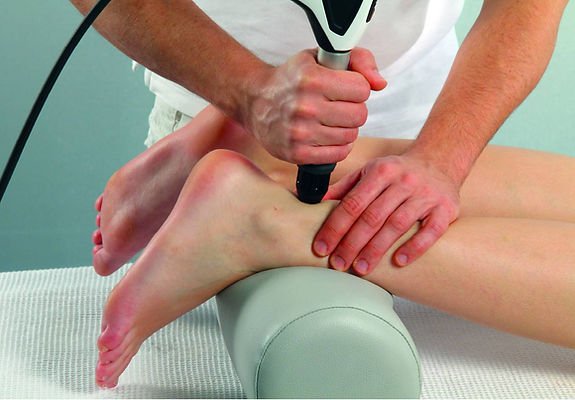Shockwave Therapy
Peninsula Osteopaths are the Coromandel’s only Shockwave Therapy Provider
Shockwave Therapy
Benefits of Shockwave Therapy
- Short Treatment Time (minutes)
- Alternative to Medication
- Non-Invasive and no known side effects
- Treats large areas
- Results in few treatments (1-5)
- Muscle Massage with vibrating applicator


Common Conditions we can Help
- Chronic Tendon Pain
- Plantar Fasciitis
- Rotator Cuff Pain
- Calcifications Within Tendons
- Frozen Shoulder
- Shin Splints/Medial Tibial Stress Syndrome (MTSS)
- Tennis & Golfers Elbow
- Wrist, hand & finger pain
- Carpal Tunnel Syndrome
- Hip Pain
- Bursitis
How Does it Work


Not ALL Shockwave is The Same
Your Health Outcomes

Reduces Pain and Inflammation

Neovascularisation

Accelerates Healing and Tissue Generation
Common Questions
Your Questions Answered
Your clinician will locate painful areas through palpation. These areas are marked. Ultrasound gel is applied.
The shockwave impulses are delivered using a hand-piece. A treatment will take between 5-10 minutes. Shockwaves are uncomfortable (vs painful) and usually quickly becomes more tolerable after 1-2 minutes. The intensity of the treatment is modified for each patient and condition.
The process is repeated once a week, usually for 3-5 treatments. Some conditions may require further treatments. Some people will experience immediate pain relief. However, long term effects and best results occur up to 12 weeks post therapy.
Shockwave therapy is well tolerated by most people. However, it can be unpleasant. We will work with you to minimise any pain or discomfort. The most common side effects are local bruising and redness of the skin.
Please call or book in to see us to discuss if shockwave therapy is safe for you. We will always do a risk assessment before treatment. We know from experience that there are certain injuries that will likely respond better or worse to shockwave therapy.
You should avoid shockwave therapy if:
You have had a steroid injection in the last 6 weeks.
You are pregnant.
You have a blood clotting disorder (including thrombosis).
You are on Warfarin or any other anticoagulants.
You have a pacemaker.
You have a tumour present at the treatment site.
You have an infection or skin abrasion at the treatment site.
